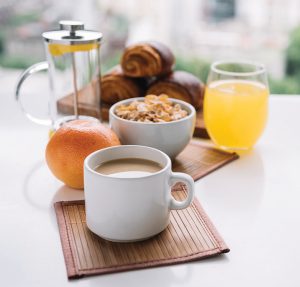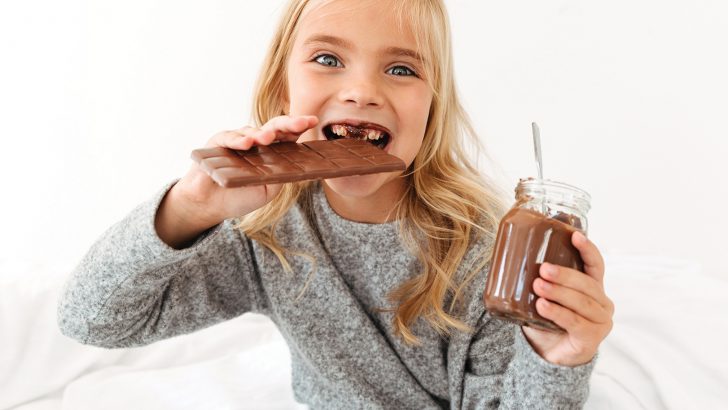Without a consistent routine, we may be eating more than usual or finding it difficult to think of what to cook writes Ruadhán Jones
What’s for dinner, when can we eat, can I have snack now – all these questions have piled on top of us during lockdown.
Many are cooking regularly for children and isolated friends and family, as well as balancing home schooling and working from home.
The lockdown period has seen a 45% increase in the consumption of junk food and sweets, according to the latest figures from the Central Statistics Office (CSO).
Much of this is due to increased anxiety and tension, while boredom and easy access to our food cupboards adds a great temptation to snack the time away.
But though the pandemic has increased the number of treats we’re consuming, it only exacerbated a trend well established before lockdown.
In 2017, a report was released which examined why adults gave treats to children. The report concluded that “children are being continually ‘treated’ with unhealthy food to such an extent that it is no longer considered to be a ‘real treat’: this behaviour has become normalised into children’s daily or weekly routine”.
The report was released by Safefood, an all-island body who promote safe and healthy eating on the island of Ireland. They recommended that adults be encouraged “to reintroduce the true definition of a treat – regularly referred to by participants as “real treats” – as an event or item that is valued because it is rare or “out of the ordinary” and gives great pleasure”.
How to treat yourself
Does that mean an end to all snacking? Not at all! It’s still a good thing to eat fun treats and snacks, but virtue is in moderation and a treat is all the nicer when it is actually a treat.
Part of the problem is that parents and childminders’ childhood experience of the rarity of treats contrasts with the easy availability and routine provision of treats to the current generation.
So, in the spirit of the times, while lockdown has unsettled old routines, it has also provided us with an opportunity to establish new ones.
HSE dietitian Olivia Kelly Holton, believes that “spending time at home gives us a unique opportunity to instil good eating habits within the household and to be good role models for our children’s dietary choices”.
The HSE has published a number of useful tips and guides for getting our diets on the right track.
Planning notice
Much of the advice will sound familiar. It comes down to planning and establishing a routine, says dietitian Aoife Hearne.
“Planning can really help,” Ms Hearne says. “Making a daily or even a weekly list of the meals you’re going to eat can really help you with your shopping. Routine can also really help. Try to have three meals and one to two snacks spread throughout the day.”
Keeping to a schedule can help stave off boredom and control our tendencies to graze on food all day.
As part of your plan, scheduling snack times is especially important, according to Aileen McGloin of Safefood.
“First make a plan as a family and make one that is achievable,” Ms McGloin advises. “So, if you are having snacks morning, noon and night, maybe just aim to have them in the evening.
“If you’re having them every evening, maybe just go for a treat free day. Whatever change you decide to make, just make it small and achievable and it will make a difference.”
Why do we snack
You could also think about why your kids eat more treats than you might want them to. Do they ask for them? Are you using treats to reward good behaviours or prevent bad ones? Where are they eating these treats?
Thinking about these might help you to understand some of the triggers. Once you’ve set a goal, you’ll need to work with your family to agree this. Everybody has to be in this together if it’s going to work.
If you’re still struggling, sticky notes on cupboards and fridges can help remind us of our aims and to make it easier for yourself and others, don’t keep large volumes of treats at home – this adds to the temptation.
In addition, keeping healthy snacks like nuts, fruits, cheese and veg can fill the voids between meals, especially for kids. Safefood provide a number of options for tasty and nutritious snacks, ranging from fruit and breadsticks to cheese and tomato toasties.
Making mealtimes easy
Once we’ve started controlling our snacking, that’s the first part of the battle complete. It leaves us with ample opportunity to enjoy our main meals of the day.
It can be a bit of a vicious circle; I’ve been snacking and am not that hungry, so I don’t put as much effort into meals, so I snack more often… To break the cycle then, we need to put a bit of effort into our meal times, cooking dishes that are flavoursome, fun and filling.
I’ve found the time at home to be great for experimenting with new dishes. What I’ve discovered is there are all sorts of ways to spice up your meal times, but they don’t have to be labour intensive or very expensive. A quick stir fry can be as satisfying as a steak (though I’m not sure everyone agrees with me on that!).
As with most things it seems, it’s best to start with a plan. A weekly shop is a much easier thing when you know exactly what you need.
Think about how many meals you need to make and try to have a balance between quick meals and those meals where you go the extra mile. You can also save time and money by choosing recipes that use the same key ingredients.
Make a go-to list of meals that your family enjoys and alternate between these. You could introduce new recipes each week and if it’s a hit add it to your favourites! Get the kids involved too by asking them what they would like to eat and seeing if any have an interest in cooking themselves. If children feel they’re involved in the meal, they’re more likely to eat it.
Don’t forget breakfast

I don’t know about you, but when anyone mentions mealtimes I immediately think of dinner. Breakfast and lunch can sometimes seem like afterthoughts when you know there’s a steak (or a stir fry) to come.
But breakfast in particular is an important meal and can set the tone for the day. Dietitian Olivia Kelly Holton suggests that while establishing a good breakfast routine won’t solve all our problems, “starting the day with the right nutritional route can certainly make the rest of the day a little easier on our much-loved little ones”.
The benefits of a good breakfast are manifold, from promoting the breakdown of glucose to jump starting our metabolisms. While this might seem an abstract, scientific thing, it has concrete implications for our mental and physical wellbeing.
“Research has shown that eating fruit, grains and good quality protein within a couple of hours of waking up helps to avoid glucose fluctuations throughout the day,” says Dr Holton. “Glucose fluctuations can cause mood swings, hyperactivity and poor concentration in our little darlings and stress in adults, a combination best avoided in lockdown.
“Studies show that people who skip breakfast can have a sluggish metabolism causing them to gain extra weight leading to a viscous circle low activity, high cholesterol, high blood pressure and heart disease in later life.”
So while we won’t get it right every time, those are two sound reasons to start the day with a good breakfast!
Balanced diet, balanced life
In a period when it’s more important than ever to look after our general health, paying attention to our diet can contribute to greater wellbeing – treat yourself with care and you’ll begin to care for yourself.
A simple food plan can make such a big difference to how you view your diet. While the temptation is to snack on sweet treats and feel-good foods, it’s all the more reason to seek nourishment of a more wholesome and enjoyable kind.
For more advice visit here.


 Ruadhán Jones
Ruadhán Jones
